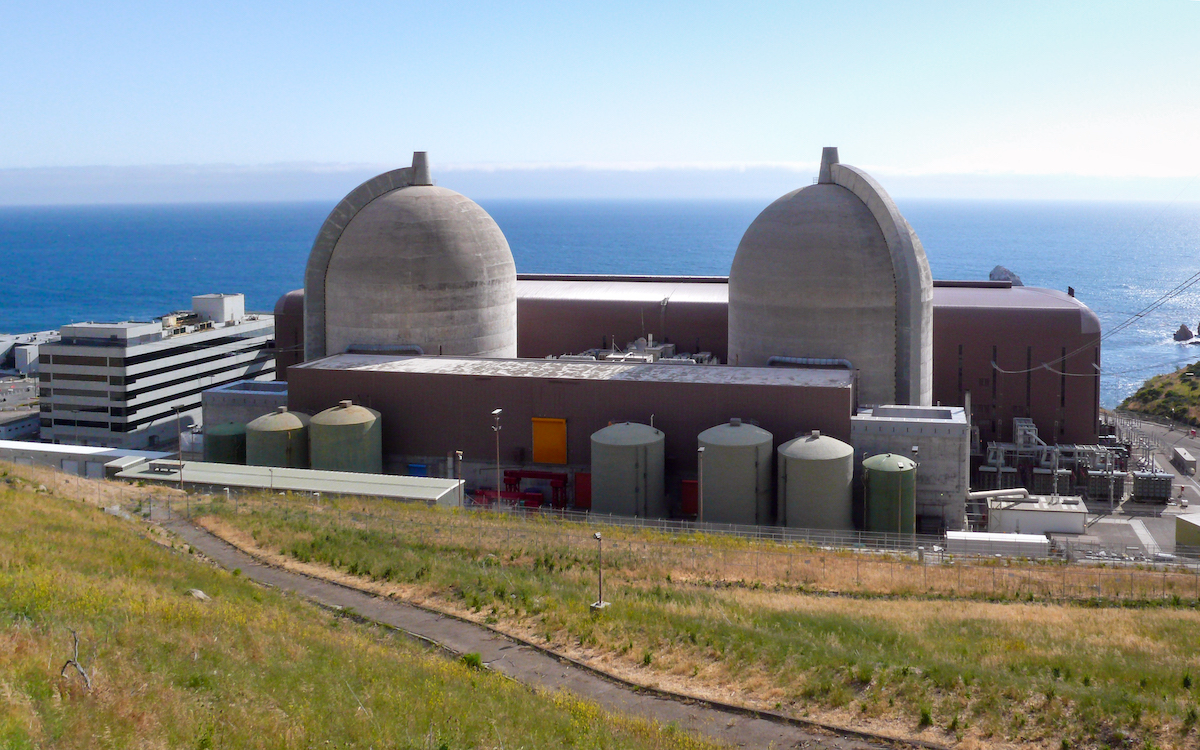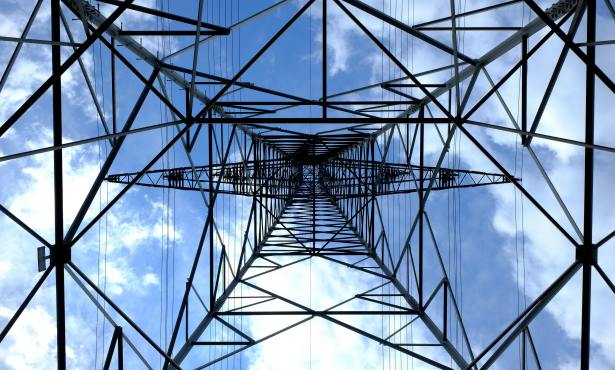Diablo Canyon Does the Time Warp
How Can a Nuclear Power Decision Be Made in December When Some Data Won't Be Available Until February?

What is “adequate safety”? And how much does it cost? These might sound like simple questions, but when it comes to PG&E’s Diablo Canyon nuclear power plant, the answers are anything but simple.
The U.S. Nuclear Regulatory Commission (NRC) and the California Public Utilities Commission (CPUC) have to come up with their own answers to these questions — pronto — and to the many other questions that flow from them.
Diablo, of course, is the massive, double-domed nuclear facility just up the coast from Santa Barbara County. The NRC has the task, in early 2024, of starting to consider a 20-year-license-renewal request once Pacific Gas & Electric submits it at the end of this year.
The CPUC has a much tighter window to make its decision: It has been charged with deciding, by this December 31, whether or not to give state-level approval to extending operations at Diablo. These are huge decisions for the NRC and the CPUC. And for all of us. And they come with safety and cost questions that range from relatively modest to, well, meltdown-level major.
Diablo’s two reactors were scheduled to close in 2024 and 2025, at the end of their 40-year NRC operating licenses. Owner-operator PG&E, community groups, and unions had come to a shutdown agreement that was approved in 2018 by the CPUC. That got upended last year, when the California Legislature passed SB 846, a bill extending operations another five years (or more) past the original closure dates, if certain conditions were met.
Governor Newsom’s role in this can’t be overlooked. He has propelled this project forward at warp speed — or the governmental equivalent of warp speed.
Diablo is in the discussion, as far as we can tell, because it happens to be sitting there, not because anyone, including the governor, has shown that it’s safe, cost-effective, or needed beyond its current shutdown dates. Yes, a mission to assure California’s electrical power reliability for the next few years as we move to 100 percent renewable power is certainly a good one. It’s important to remember that this is the goal and that trying to jam into the process an aging nuclear plant, generating eons of radioactive waste, is a curious way to try to achieve it.
Warp Speed Ahead
To demonstrate whether the Legislature’s conditions of approval have been met, state agencies have been scrambling to provide relevant studies and reports. There were numerous deadlines last month, and more that go all the way into November, all for vital information to flow to the CPUC. The year’s last scheduled voting meeting on the CPUC calendar is Dec. 14, 2023. To reiterate — not everything is expected to get to them in time.
The question the CPUC must answer: Do the costs pencil out? You might think that nuclear safety would be the basis for consideration here, but you’d be wrong. Nuclear safety is the purview only of the NRC, whose mission statement includes the flaccid goal of providing “reasonable assurance of adequate protection of public health and safety.” This leaves the state to flex its only muscle — evaluating whether the costs, to be borne in large measure by the people of California, are justified.
So here’s the interesting intersection where costs and safety meet. It’s in the presentation and interpretation of just what needs to be done to keep Diablo “adequately” safe. The Legislature wants the CPUC to be given updated info on seismic safety — as you probably know, there’s a pesky web of active faultlines around the plant. With new methods of evaluating the thrust faults that go directly under the plant, what type of structural upgrades, for example, are needed? What would they cost?
The Legislature also wants the CPUC to know about upkeep — the significant To-Do List of what has to be done to get the place ready to carry on past the original closing dates. What projects need to be started? What equipment needs to be looked at? What needs to be upgraded? What key nuclear components might need to be fully and urgently replaced? What will all of that cost?
It really seems to depend on who deems what necessary.
It’s certainly widely known by employees at state agencies up and down the line that this process was precipitated by a governor seeming to be seeking one particular result. Will that have any overt or subliminal effect on the way data is presented and analyzed? We hope not.
Rubber Stamps
Helping the CPUC is its own Diablo Canyon Independent Safety Committee, a three-person panel that for years has studied the doings at Diablo. They do this with the help of several consultants and a super-enthusiastic crew of PG&E employees eager to explain how everything is well under control at Diablo on every front at all times. There’s a lot of camaraderie at these meetings.
We are not nuclear scientists. We don’t doubt the seriousness of the panel members and consultants — they are all highly respected experts in their field. We do question the coziness and the easy acceptance of virtually everything the PG&E team presents.
An example of that would be that To-Do List, which was an agenda item at the committee’s meeting in September. The committee chair, Peter Lam, noted that Diablo staff had devoted “20,000 to 40,000 man-hours” to evaluating the maintenance and facilities projects needed as PG&E prepares to run the plant for up to 20 more years. You might think that costs of things would be included in this presentation, but again, you’d be wrong. The costs were not discussed here, because the committee has stated that costs are not its purview. (Those will be addressed by other entities, and the information relayed to the CPUC.)
The committee’s consultants reported on the study PG&E had done and then offered general commentary that all seemed fine. And that was that. The power point ended with a slide reading, “The DCISC (the Independent Safety Committee) recommends that California State authorities support the findings of the plant upgrade projects recommended by DCPP (Diablo Canyon Power Plant).”
Upon receiving the presentation, the panel members made gentle comments about having nowhere near the resources to look into the study at the same level that PG&E had been able to do the study.
Don’t Blame Us
Committee member Per Peterson spoke approvingly of the ability to “spot check” the work, and added, “The processes, I think, were effective in achieving the goal of completeness and therefore any individual can have confidence that that’s likely what has happened.”
To which we say, “Huh?”
Panelist Robert Budnitz added, with regard to prioritizing the need for various facilities projects, “Nobody is pretending that we made a quantitative, numerical ranking, in which number 321 was sure as heck more important than number 322. That’s not what we did.”
Peter Lam, referring to the NRC goal of “adequate” safety, said with a chuckle, “I believe this committee has adequately, quote-unquote, reviewed this item.”
And so it went. The committee received its report and unanimously approved it. Dr. Lam said, in conclusion, “After this report is sent by the committee, the committee will have met the committee’s obligation.” To us, all of this sounded like the courtly gentleman’s version of, “If something goes wrong, don’t blame us.”
Separately, the seismic update required by the Legislature is apparently to come from a PG&E assessment to be completed sometime in November and be reviewed by another independent peer review panel, whose report will come some time … later? But the Independent Safety Committee has already poo-pooed comments from environmental groups that the most recent study, in 2018, is woefully inadequate because it doesn’t address the evolving science of those dangerous thrust faults under the plant.
It remains to be seen what the updated seismic study will include, and not include. Will it actually arrive in time for the CPUC’s December decision? Will PG&E’s report be rubber stamped by the peer review panel in much the way PG&E’s reports to the Independent Safety Committee seem to be? Will there be time for other experts to weigh in with different perspectives and information before the CPUC makes its decision?
Shatter Like Glass
What that updated seismic report may say is especially important because of the issue of embrittlement, or the metallurgical deterioration that can occur inside an operating nuclear reactor. This problem is of particular concern in Diablo’s Unit 1 reactor pressure vessel.
Unit 1 arrived at Avila Beach decades ago, with flaws in its metallurgy that were discovered after it was delivered. Certain welds — you know, the things that hold other things together — were made with the wrong mix of metals. As they’ve been bombarded with neutron radiation for almost four decades, they haven’t withstood that as well as they might have. So anything that could trigger a sudden reduction in temperature — say, an earthquake, or some bad-actor action, or even operator error — anything that could cause a too-rapid cooling in the pressure vessel, could cause those welds to shatter.
“Like glass,” as the watchdog environmental nonprofit, San Luis Obispo Mothers for Peace, puts it.
This is where this story would take a very dark turn, indeed, to the possibility of a catastrophic meltdown. And it’s where any number of experts who blithely okayed extended operations would very likely want to slink away.
You might think that PG&E would have paid particular attention to this potentially catastrophic problem. Well, they did, but not in the way you may have hoped.
It turns out that the devices used to measure deterioration in Unit 1 haven’t been checked since 2003 because PG&E hasn’t been able to open the lid. That’s right, couldn’t get it open. They will supposedly try again this month, during a scheduled re-fueling shutdown.
If they can get the current device out, which is called a coupon, it’ll take up to 18 months to get the test results. But it turns out the information on the particular weld material that is the most worrisome isn’t included in that coupon.
What really needs to happen is that older coupons, the ones that featured info on that weld material, need to be found in storage and re-tested to see how they’ve aged. That will at least approximate what’s going on in the reactor. And there’s a new test, called a nuclear indentation test, that could be done much more quickly, if someone would just give the go-ahead to do it. These ideas weren’t presented by the Safety Committee or its consultants, but by knowledeable members of the public.
Is Forgetfulness Safe?
There’s more. The Unit 1 embrittlement issue is fraught with what one such member of the public, Bruce Severance, a regulatory compliance engineer, diplomatically calls discontinuities, forgotten old documents, and oversights. Incomplete coupon information submitted by PG&E in the past was never updated, even though the NRC repeatedly requested it. PG&E also took the, uh, audacious step of saying some of its coupon data submissions were invalid, giving it the opportunity to replace its data with data from another reactor, in another state. How is that even allowed?
Even with these anomalies, and others, the NRC this year gave PG&E permission to take an expedited trip to a license extension review. In fact, they have agreed to let Diablo continue operating past the current shutdown dates and for as long as it takes for the NRC to make a final decision. Severance asked the Independent Safety Committee, “The NRC may have forgotten what it asked for previously and never got — just because they forgot, does that make it safe?”
Severance has made numerous recommendations to the Independent Safety Committee on the urgent need to study the embrittlement issues of Unit 1. He has been joined in this critical effort by renowned nuclear scientist Digby Macdonald and the Mothers for Peace.
The committee has now, finally, hired a consultant to do an embrittlement study to address the multiple safety issues raised. That study will be presented to the committee in February 2024, not in time for the CPUC December decision. Does it make a difference that the consultant hired is someone who co-wrote the NRC’s updated regulations on embrittlement, which made those regulations more lax because they had previously been based on “unnecessarily conservative (i.e., cautious) assumptions”? As we noted earlier, it certainly seems to matters who deems what necessary … or “adequately” cautious.
The overarching study of the costs of Diablo versus alternate energy sources was to be published by the California Energy Commission on September 30. Instead, a draft prepared by the agency’s staff, and not yet approved or disapproved by the Energy Commission itself, came out on the 26th. This is the study that is to give the CPUC information ahead of its critical cost/benefit decision process. This is the study that is relying on the casual go-ahead from the Independent Safety Committee in approving PG&E’s description of necessary work to be done. This is the study that has no cost data on updated seismic costs, or embrittlement costs. (Severance notes that replacing a reactor pressure vessel, for example, could cost upwards of $700 million. That’s a price tag of note, don’t you think?)
A December 14 Deadline
Actionable safety and cost data, accepted by all as being legit, needs to become available to the decision makers at the CPUC (and the NRC). Parties to the Diablo matter — the community groups, watchdog nonprofits, business advocacy groups and others who’ve sought this status — will likely expect reasonable time to send in their own response briefs to the CPUC on what should be measured and what shouldn’t, what’s been under-estimated and what’s been over-estimated. Legal actions may commence. In that swirl, the CPUC will still have to do something on December 14.
It seems clear to us that the CPUC will NOT have adequate information on that date to make the decision to extend operations. There will be too many unanswered questions that are impossible to ignore.
According to the Alliance for Nuclear Responsibility, another watchdog nonprofit, the only responsible action will be to vote to maintain the existing shutdown dates of 2024 and 2025. The Alliance adds, in their Opening Brief to the CPUC, “If […] persuasive evidence becomes available that these dates should be adjusted, the Commission will have until November 2, 2024 for Unit 1 and August 26, 2025 for Unit 2 to do so.”
Governor Newsom, in pushing the Legislature to pass SB 846, wanted to assure the stability and adequacy of the state’s electric system over the next few years. The information generated so far this year, as agencies have done studies and written drafts, and outside experts have evaluated California’s energy future, has shown that this huge, complex system actually has lots of oomph, with or without Diablo, to keep the lights on. “This system” being all of the renewables already on line and in the works; the state’s growing battery storage portfolio; the often-under-reported growth in rooftop solar and micro-grids that aren’t part of the major transmission network; and the peak-demand-shifting programs that make it easy for customers big and small to get a text, turn off a light in a key part of the day, reduce the burden on the grid, and save money.
This vast portfolio of California electricity assets is there and growing. We hope and expect it will be clear that Diablo isn’t needed in this equation. And we expect that it will be equally clear that the huge financial cost of keeping Diablo running is a terrible use of funds that can instead go–right now–to our truly renewable enegy future. Risking a catastrophe on the Central Coast by extending operations at Diablo absolutely isn’t in the interests of anyone in California. That includes Governor Newsom and all the rest of us. So, Governor, please encourage the CPUC to make the responsible call and let’s get Diablo Canyon shut on schedule.
To Put Your Concern into Action
Write to the CPUC:
https://apps.cpuc.ca.gov/apex/f?p=401:56::::RP,57,RIR:P5_PROCEEDING_SELECT:R2301007
Sign on to the Mothers for Peace petition about Diablo:
https://chng.it/LQfpfWvVnm
Donate:
San Luis Obispo Mothers for Peace: mothersforpeace.org
Alliance for Nuclear Responsibility: a4nr.org
Lauren Hanson and Mary Jones live in Santa Barbara.



